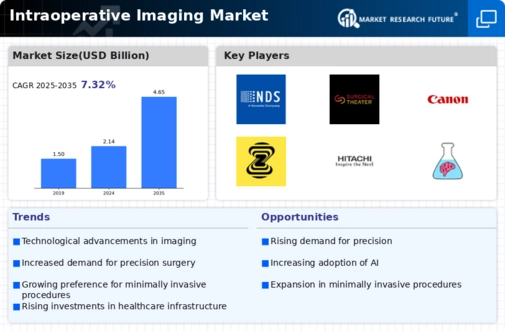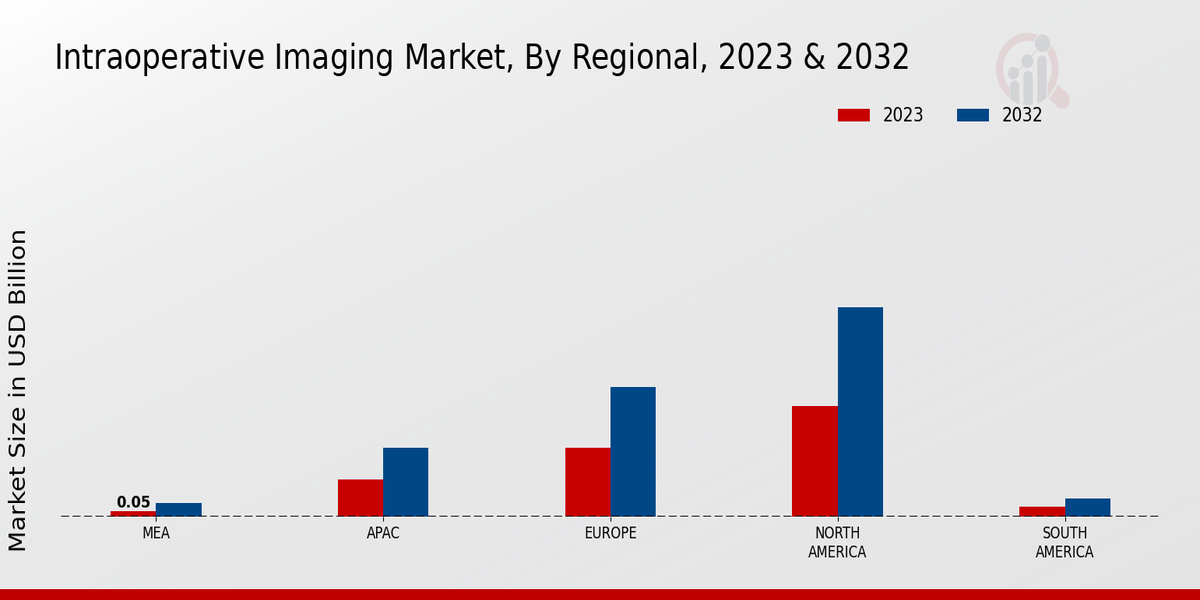Market Growth Projections
The Global Intraoperative Imaging Market Industry is poised for substantial growth, with projections indicating a market size of 2.14 USD Billion in 2024 and an anticipated increase to 4.65 USD Billion by 2035. This growth reflects a compound annual growth rate of 7.3% from 2025 to 2035, driven by technological advancements, rising demand for minimally invasive surgeries, and an aging population. The market dynamics suggest a robust expansion trajectory, highlighting the increasing integration of advanced imaging technologies in surgical environments.
Technological Advancements
The Global Intraoperative Imaging Market Industry is experiencing rapid growth due to continuous technological advancements. Innovations such as 3D imaging, augmented reality, and improved imaging modalities enhance surgical precision and outcomes. For instance, the integration of intraoperative MRI and CT scans allows surgeons to visualize anatomical structures in real-time, thereby reducing complications and improving patient safety. As these technologies become more accessible, the market is projected to reach approximately 2.14 USD Billion in 2024, reflecting a growing demand for advanced imaging solutions in surgical settings.
Growing Geriatric Population
The Global Intraoperative Imaging Market Industry is influenced by the rising geriatric population, which is more susceptible to chronic diseases requiring surgical intervention. As the elderly demographic continues to grow, the demand for effective surgical solutions increases, necessitating advanced imaging technologies. Intraoperative imaging aids in precise surgical navigation, which is particularly beneficial for complex procedures often performed on older patients. This demographic shift is likely to contribute to a compound annual growth rate of 7.3% from 2025 to 2035, underscoring the importance of intraoperative imaging in modern healthcare.
Regulatory Support and Funding
The Global Intraoperative Imaging Market Industry benefits from supportive regulatory frameworks and funding initiatives aimed at advancing medical technologies. Governments and health organizations are increasingly recognizing the importance of intraoperative imaging in improving surgical outcomes. Funding for research and development in this field is on the rise, facilitating the introduction of innovative imaging solutions. As regulatory bodies streamline approval processes for new technologies, the market is expected to flourish, with a projected growth trajectory that aligns with the increasing adoption of intraoperative imaging in surgical practices.
Increased Focus on Patient Safety
The Global Intraoperative Imaging Market Industry is propelled by an enhanced focus on patient safety and surgical outcomes. Hospitals and surgical centers are increasingly adopting intraoperative imaging technologies to minimize errors and improve the accuracy of procedures. By providing real-time imaging, these technologies help surgeons make informed decisions during operations, thereby reducing the likelihood of complications. This emphasis on safety is likely to drive market growth, as healthcare institutions prioritize investments in advanced imaging systems to enhance patient care and outcomes.
Rising Demand for Minimally Invasive Surgeries
The Global Intraoperative Imaging Market Industry is significantly driven by the increasing preference for minimally invasive surgical procedures. These techniques offer numerous benefits, including reduced recovery times and lower risk of complications. Intraoperative imaging plays a crucial role in guiding surgeons during these procedures, ensuring accuracy and efficacy. As healthcare providers adopt minimally invasive approaches, the market is expected to expand, with projections indicating a growth to 4.65 USD Billion by 2035. This trend highlights the essential role of intraoperative imaging in enhancing surgical practices.





















